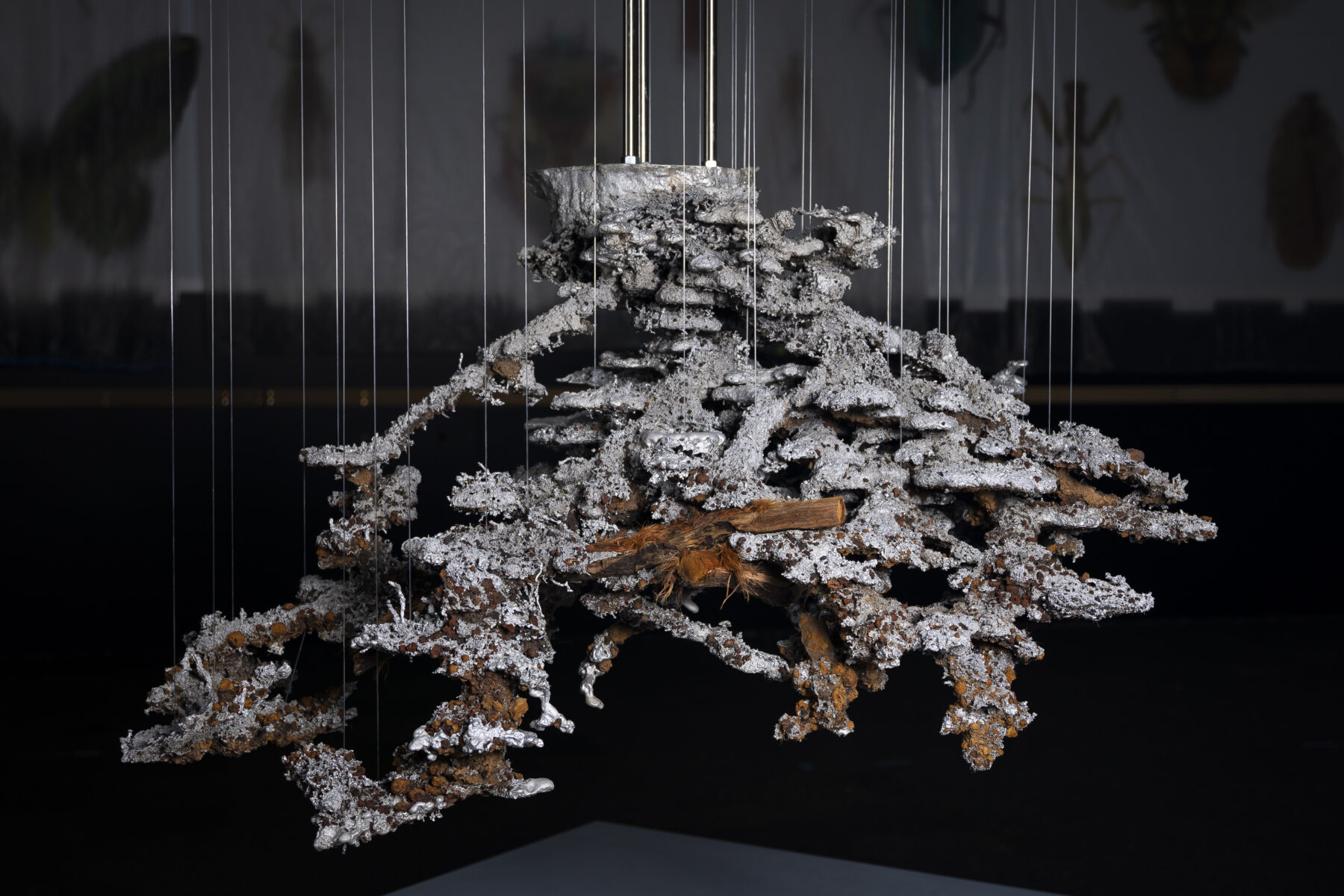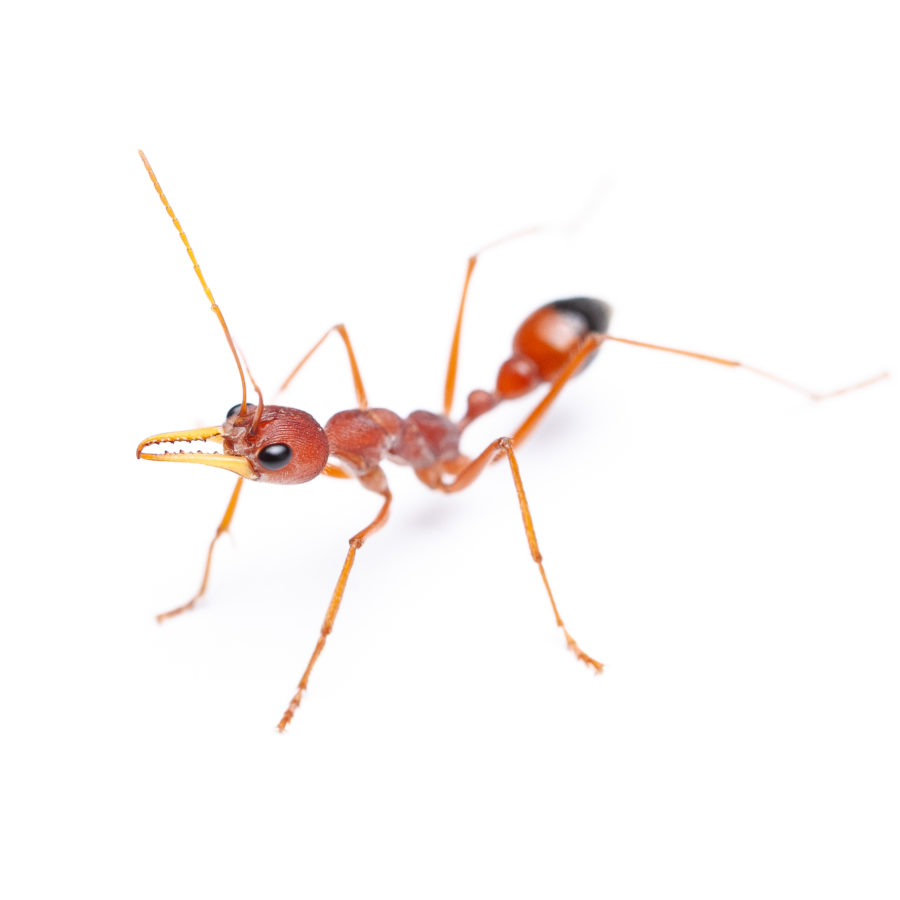Candice Marshall, Celebrating nature’s underground architects, Australian Geographic, 11 December 2023
Weighing in at around 130kg, with shining silver tentacles reaching almost 2m across, is the star of the Queensland Museum exhibition, Insect Agency.
This incredible structure, hanging from the museum’s ceiling, is an aluminium casting of the internal structure of a giant bull-ant nest.
“I’d estimate the nest was created by a colony of two to three thousand ants,” says entomologist Dr Chris Burwell, the museum’s senior scientist and curator of insects.
Chris hopes it will help people understand just how impressive ants are, and the important role they – and insects like them – play in the environment.
“The whole central tenet of the exhibition is that it is a celebration of the good things insects do for the environment, and for us,” Chris explains. “While many of us are quick to swat away a fly, slap a mosquito or flee from a wasp in the outside world, it is these very insects that have fascinating tales to tell.”
But unfortunately, the stories aren’t always easy to convey to the public in a good light.
“Insects are difficult things to display. We’ve got some displays of lots of insects, all packed in together and things like that…but we don’t have big objects. So a casting of an underground structure of an ant nest – first, it’s really big so it provides a really big sculptural feature in the display, and second, it also illustrates that there’s stuff going on underneath the ground that you don’t realise is happening – just beneath your feet.”



One giant ‘single organism’
While the casting shows an ant nest once inhabited by hundreds of thousands of giant bull-ants (Myrmecia brevinoda), Chris likens such ant colonies to single individual animals.
“The fact that ants and termites act as colonies, not just as individuals – you can regard the nest as being like a single organism, in a way,” he says. “For example, the big termite mounds you see out in the savannas of Africa are the equivalent of a big grazing mammal – it’s working as one unit. And it’s a similar example here. So little individual insects are burrowing in the soil and they all contribute, but operate as one.”
Long live the queen
For an ant nest to grow to the size of the one on display, Chris says it must be decades old.
“Different species of ants work differently but for these ants, one queen would have founded the colony and would have given birth to all of the worker ants over the years,” he explains.
“Many worker ants would have come and gone, but the queen is very long lived. The colony lives for as long as the queen does. When the queen dies the colony is dead – and she can live for decades.”


The elephant in the room is, of course, that the queen of this particular nest was killed to create the casting – as was the colony.
So is the destruction of an ant colony justified for the greater good of public education and the contribution to science?
“Unfortunately killing the ants is part of the process,” says Chris. “It is a sacrifice of the lives of many ants, but these ants aren’t scarce, and they’re not endangered. The nest is also taken from private property, so it’s not from any protected area or conservation reserve.
“I guess the ‘greater good’ is that, as part of this display as a whole, it is helping to provide the narrative that we are trying to get across to the general public – that insects do so many good things for the environment, and for us as well.
“Our central educational message is that we need insects on the planet to keep up the ecological processes that maintain the health of the environment,” he adds.

How was it made?
The Queensland Museum team reached out to hobbyist duo Australian Ant Art (AAA) to make the casting, who created it from a giant bull-ant nest found near Armidale, New South Wales.
It took the AAA team five days to create three nests of various sizes, one of which was chosen for the exhibition.
It’s a complicated, messy and exhausting process, which is explained in detail in a series of videos on the AAA’s YouTube channel.









“I’m not the science guy, I’m the guy who builds stuff,” says one half of the AAA duo, Stephen East. “But I’ve learnt heaps by looking at different ant species, the different ways they build, and the way they store things.”
Stephen and his cousin, Chris East, have been creating ant-nest castings for almost a decade, using both aluminium and resin.
“From the aluminium castings, you can see imprints of the ants and what’s in some of the different galleries, but in the resin castings you learn a lot more. You can actually physically see what was in each gallery, and you can see the different soil types at different levels, and what the galleries were used for,” explains Stephen. “It’s always really interesting to wait to see what we are going to find.”
“The stuff they can build underground is phenomenal,” he says. “It’s amazing how a tiny little hole with a little mound that you can just walk past leads to an entire structure these ants have created below the ground. And they’ve done it in the dark, with no power and no navigation tools!”
Queensland Museum’s Insect Agency exhibition is open now, closing 7 July 2024.

